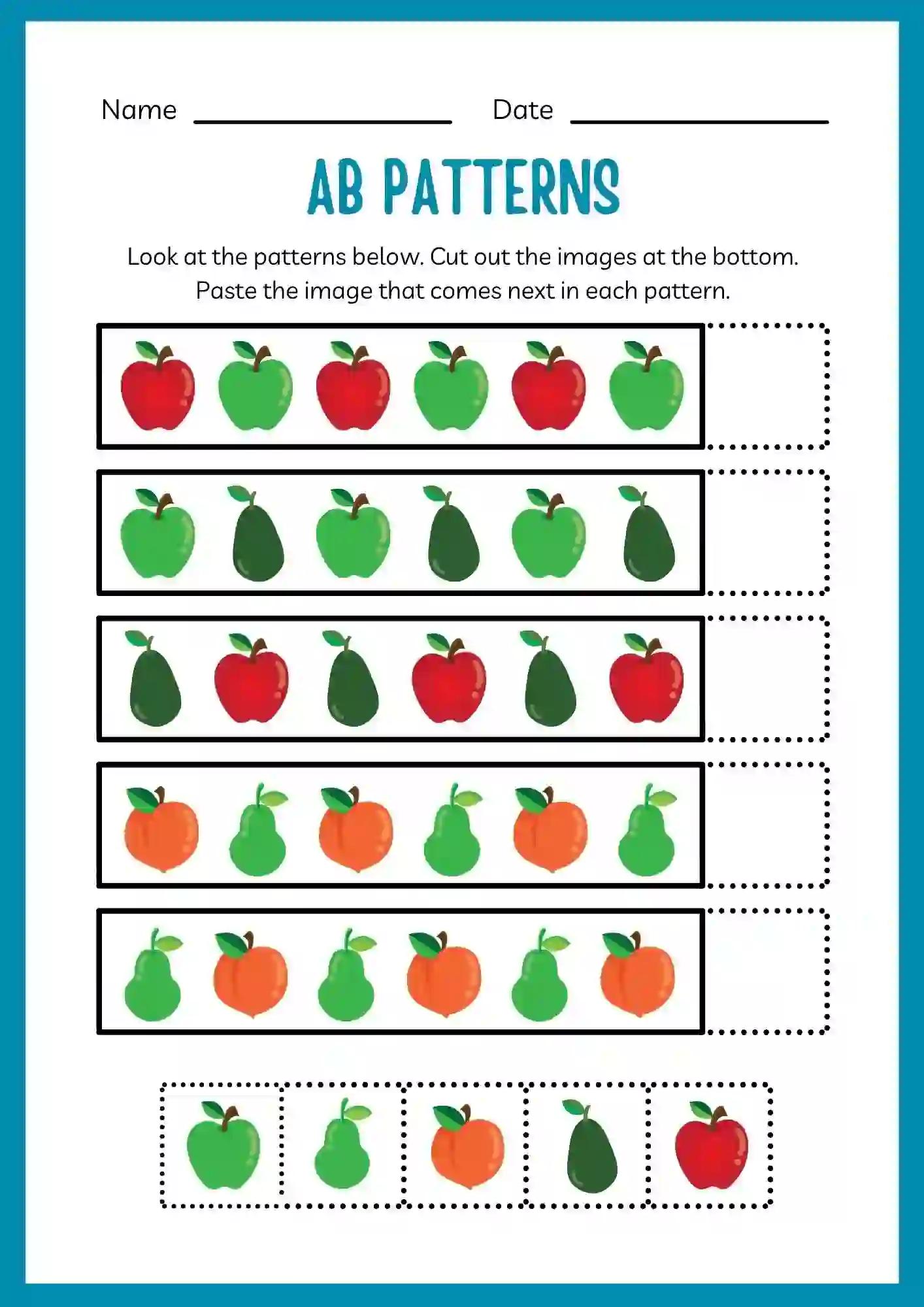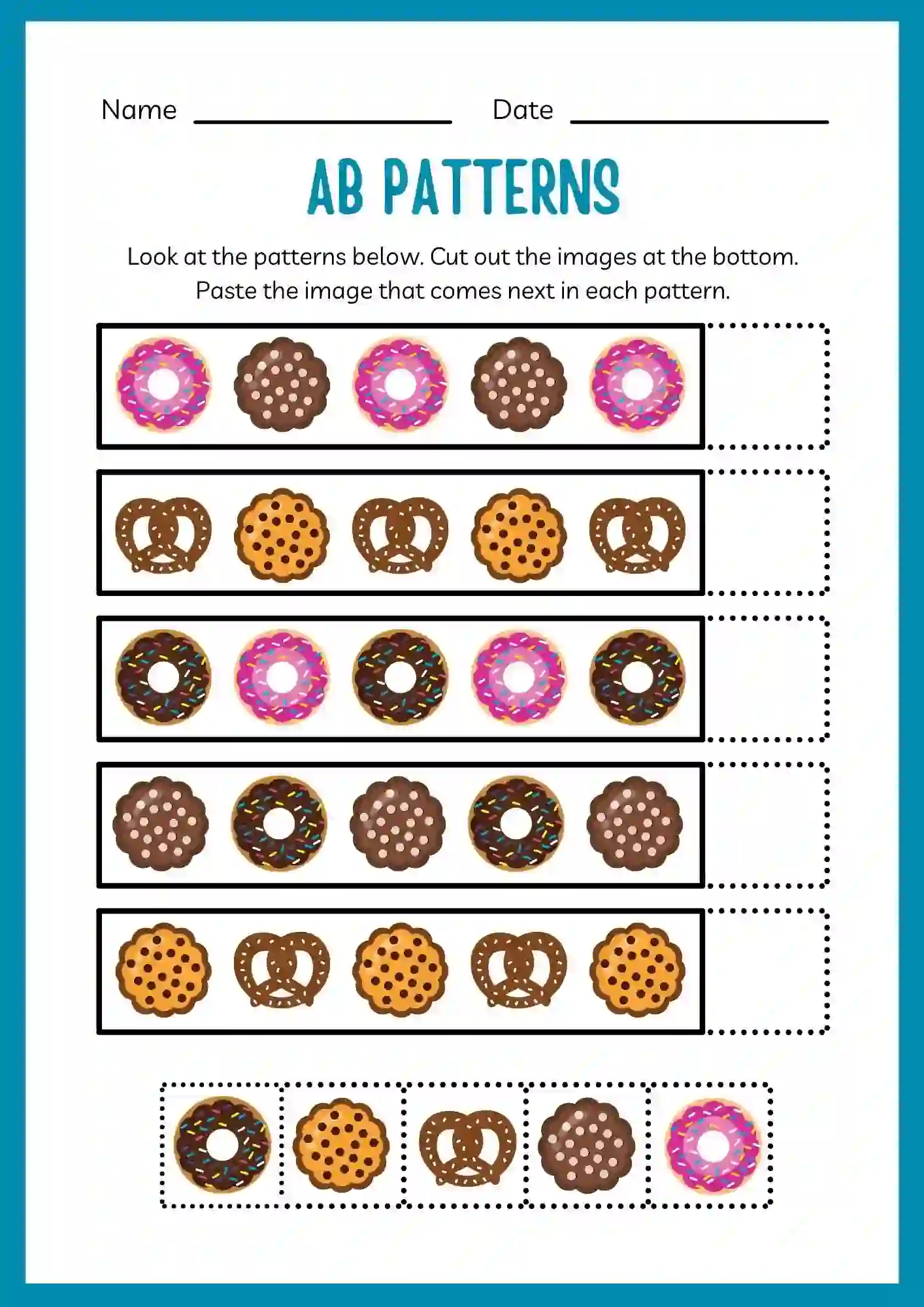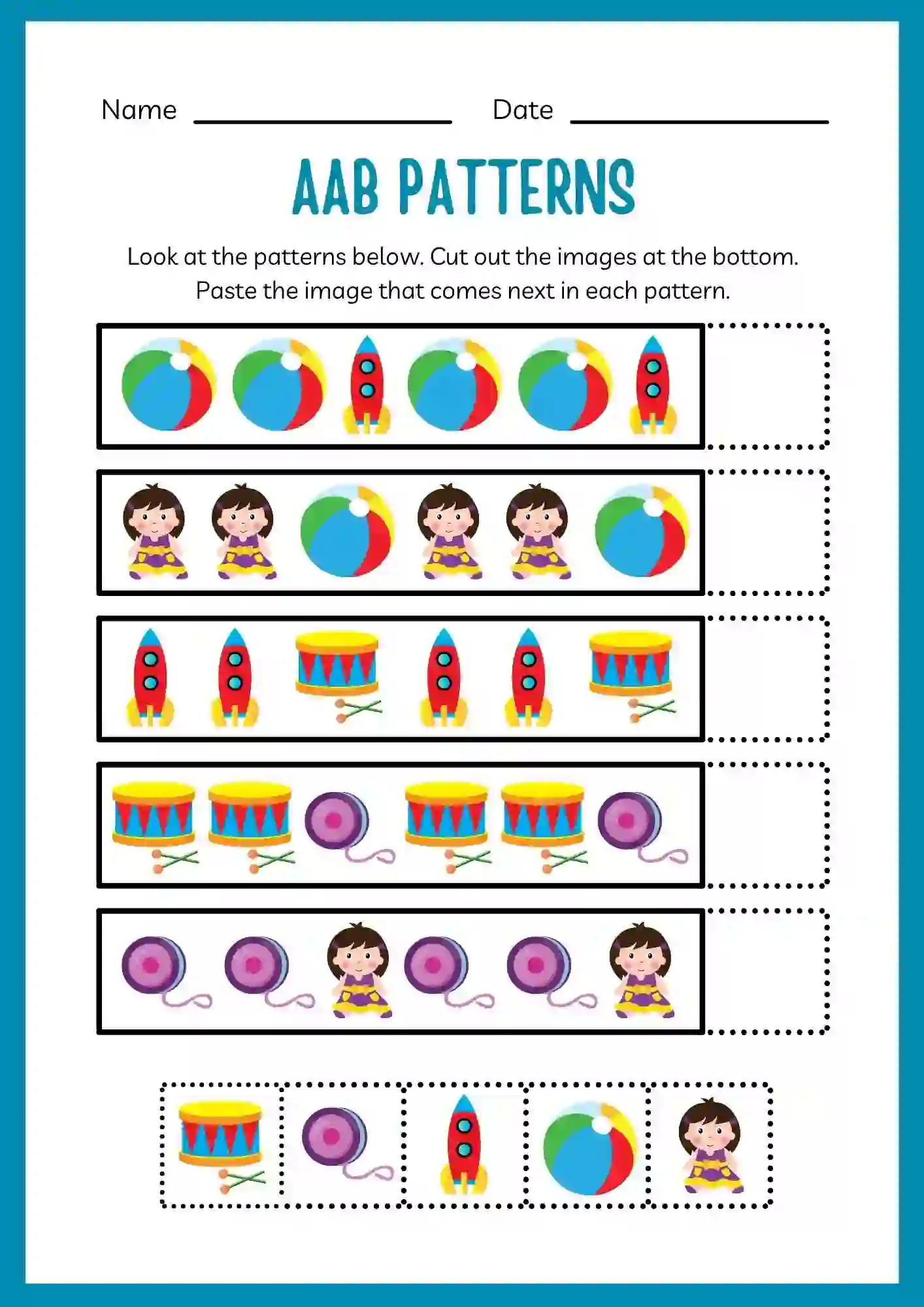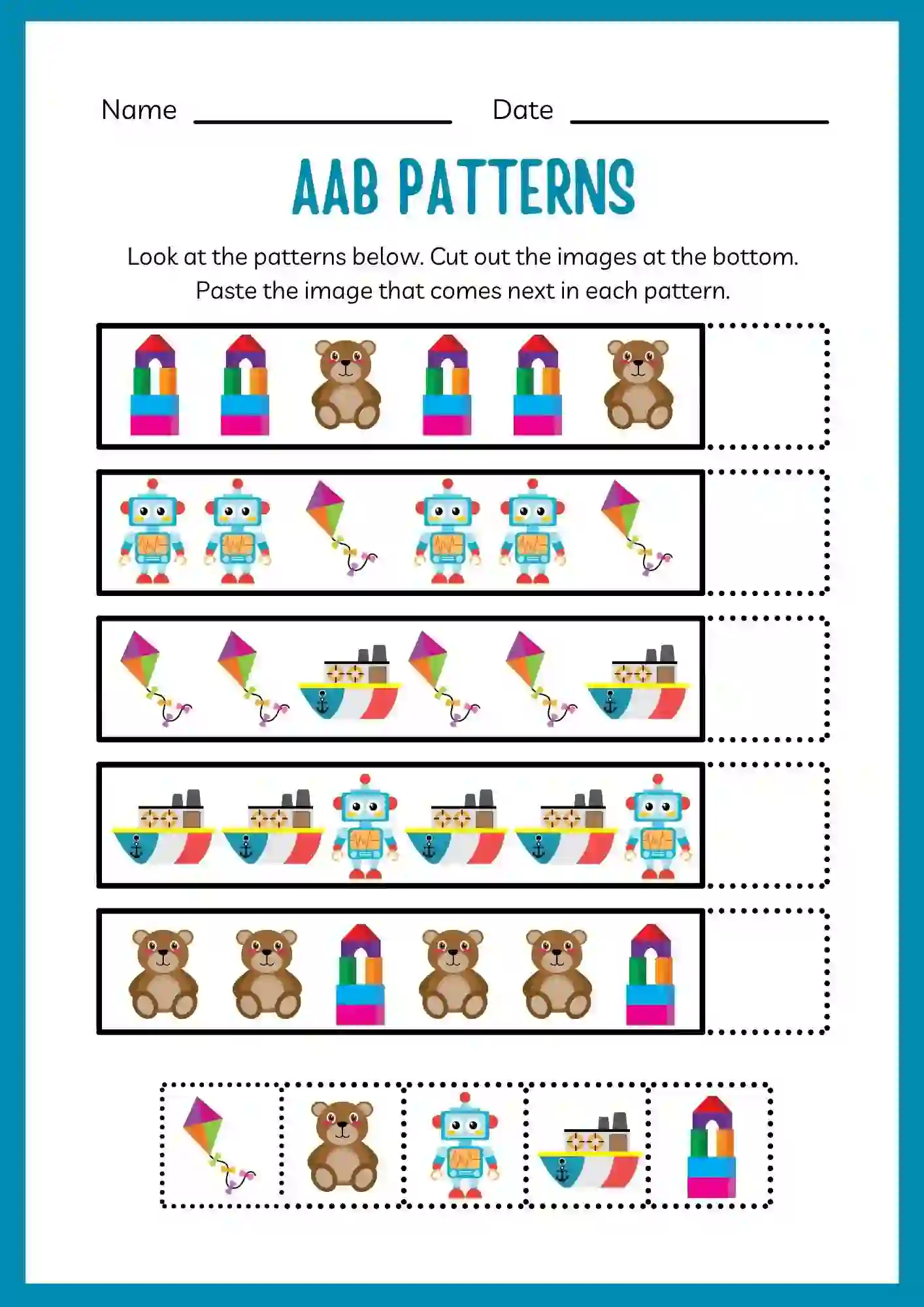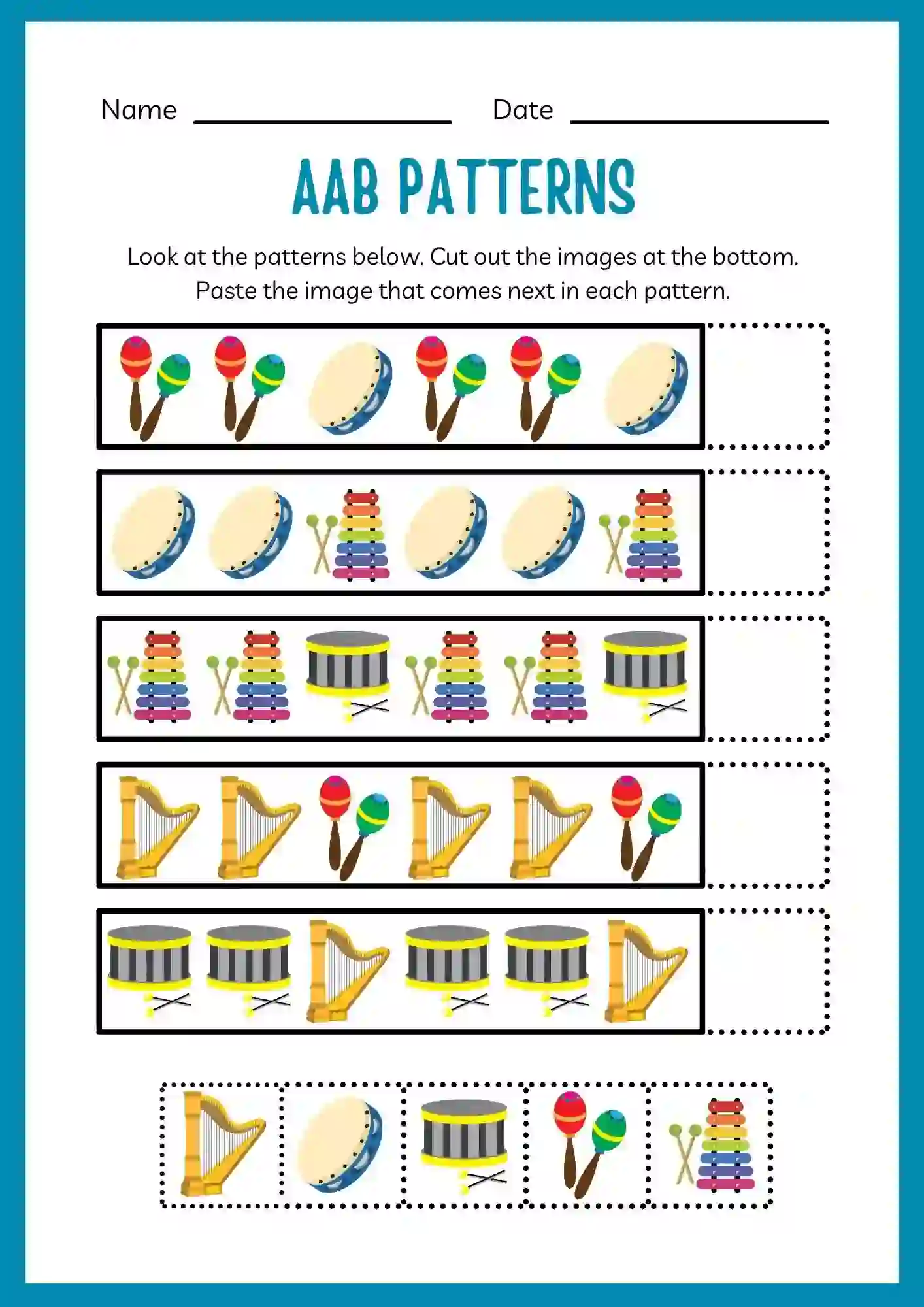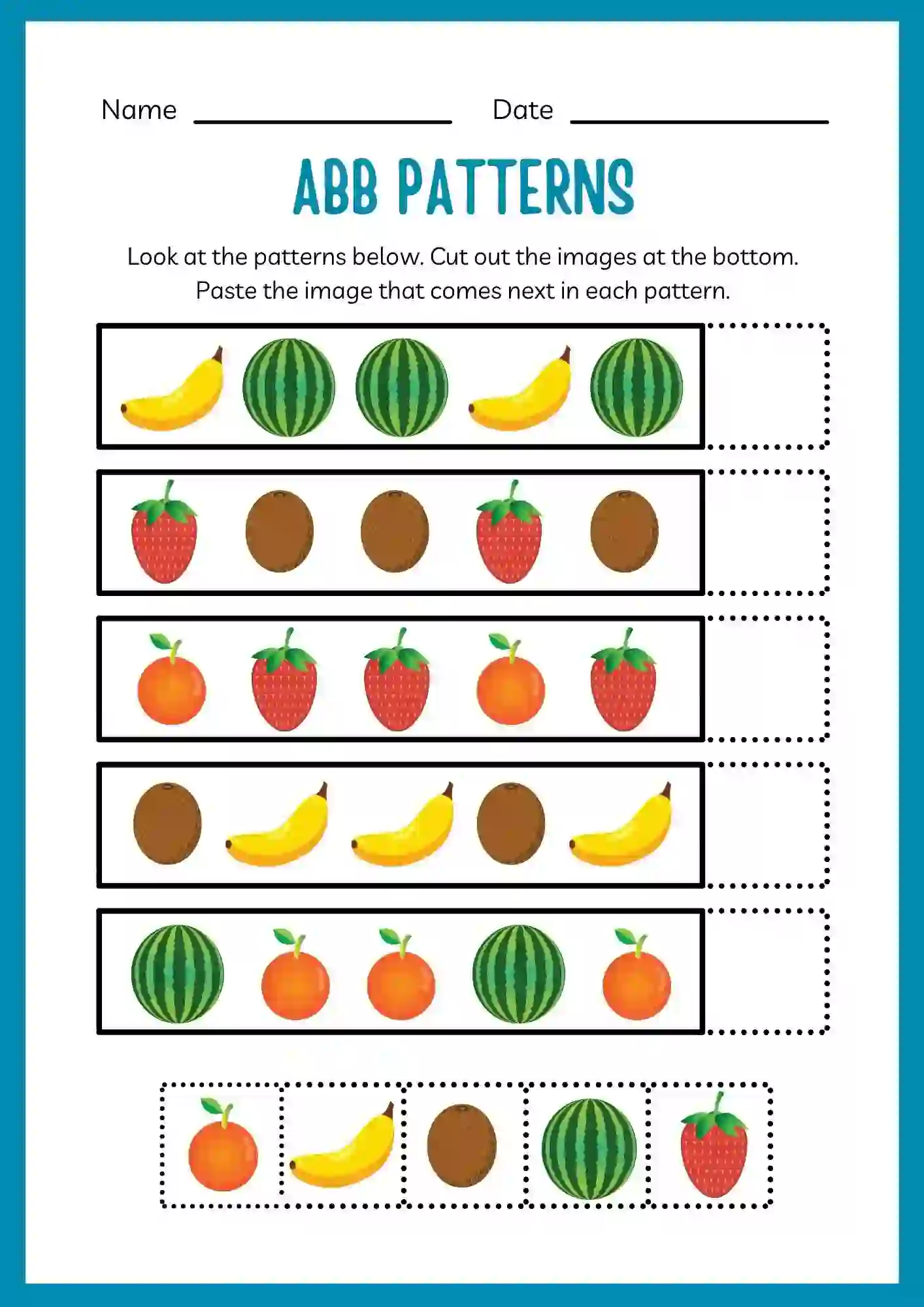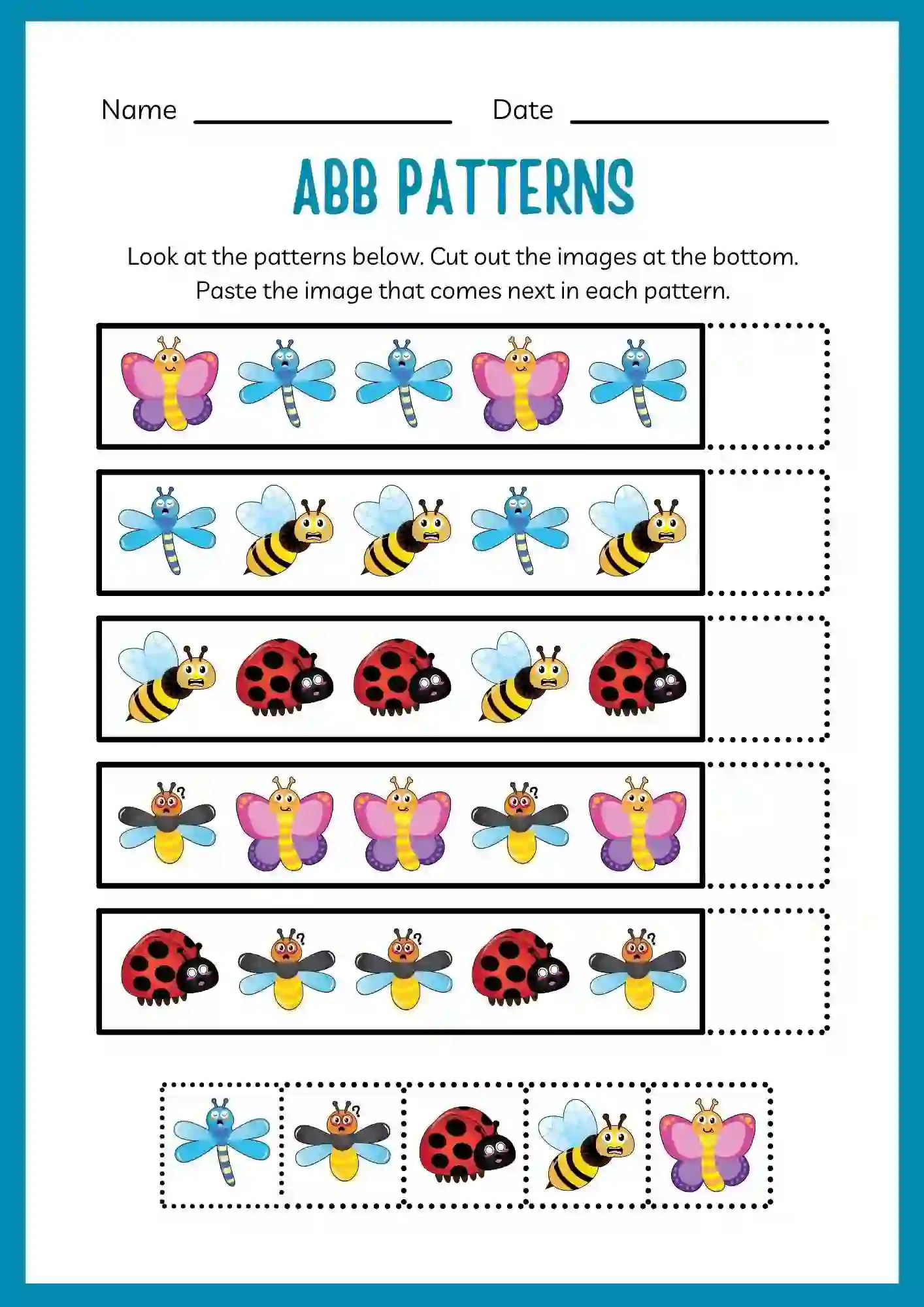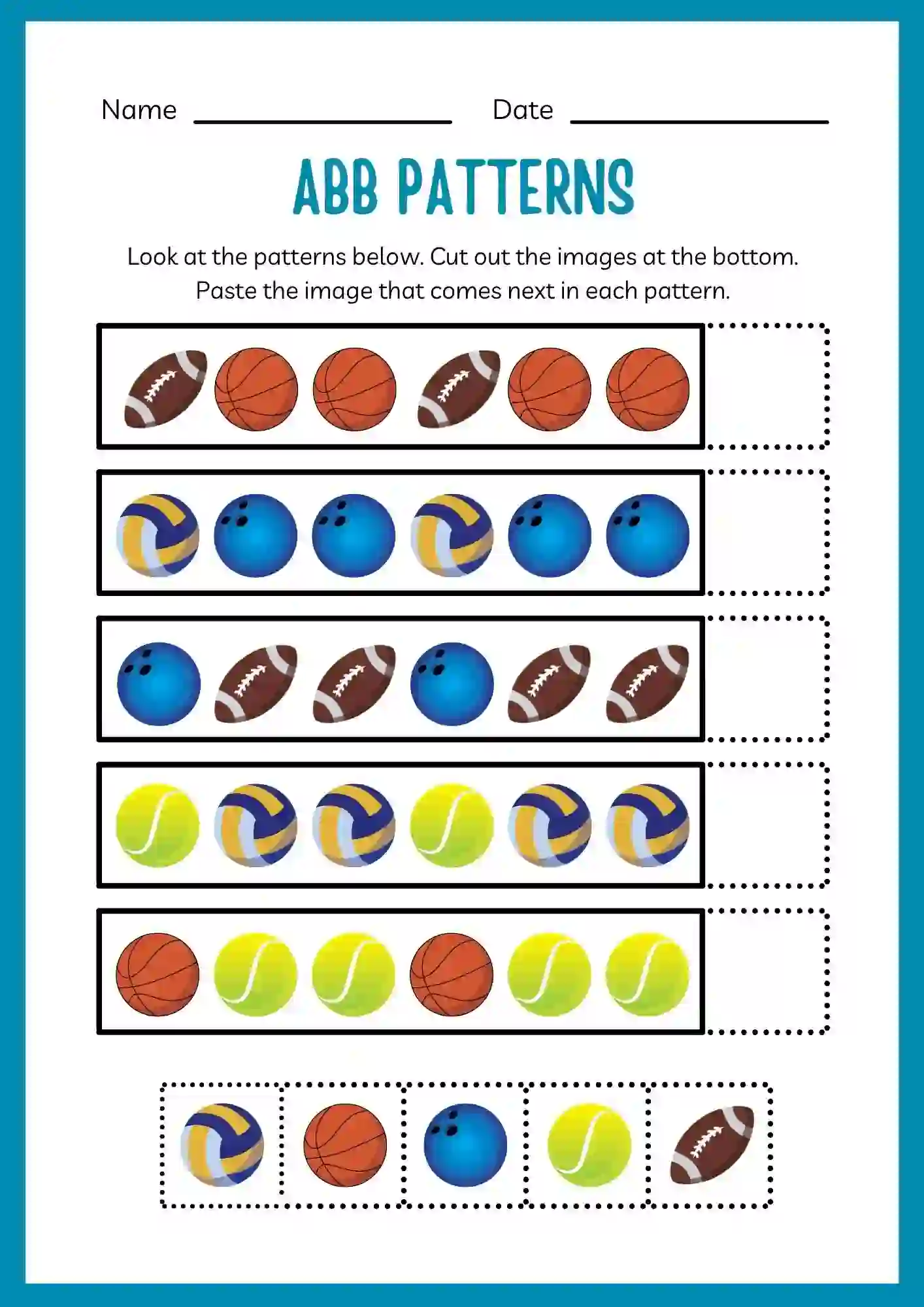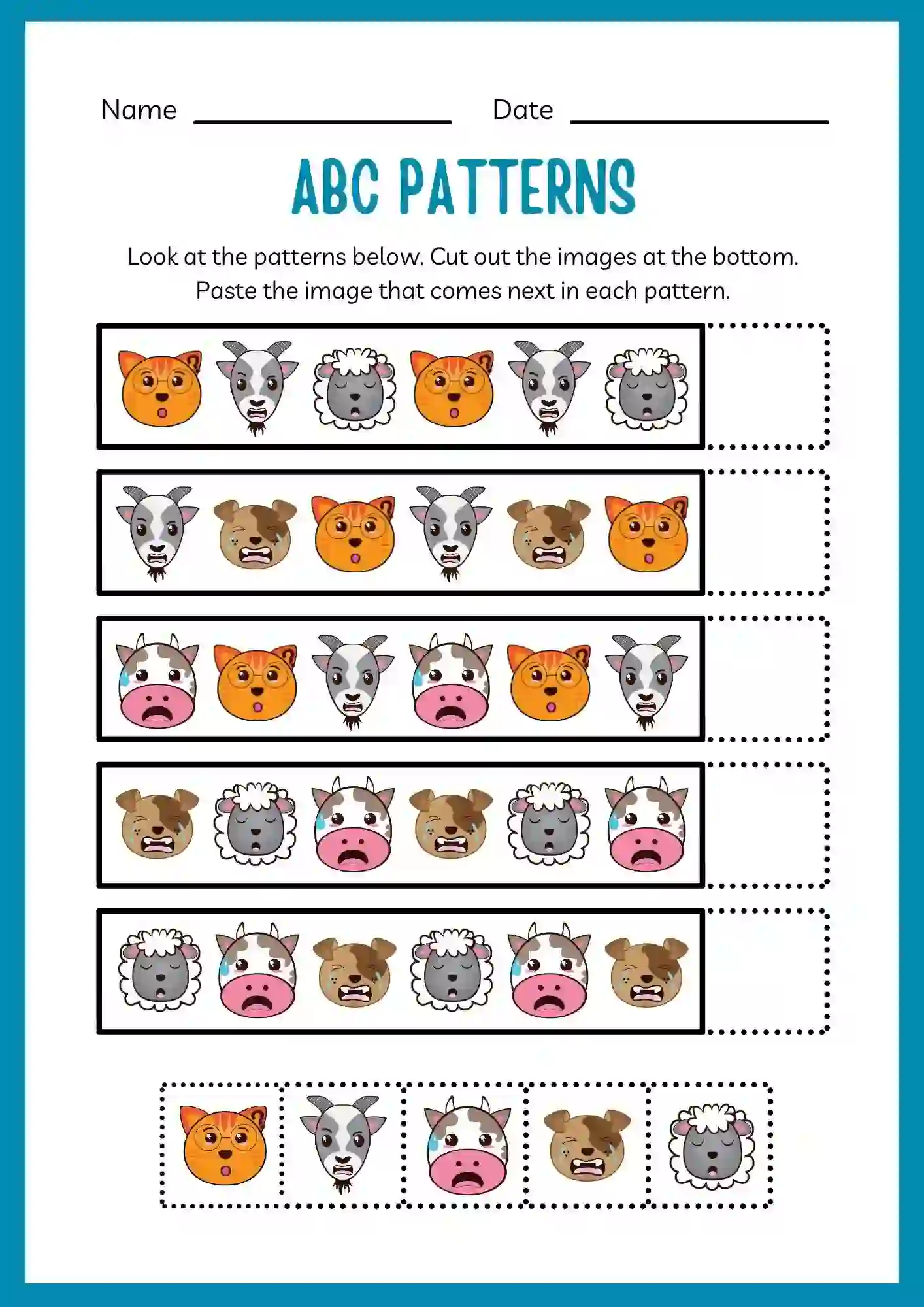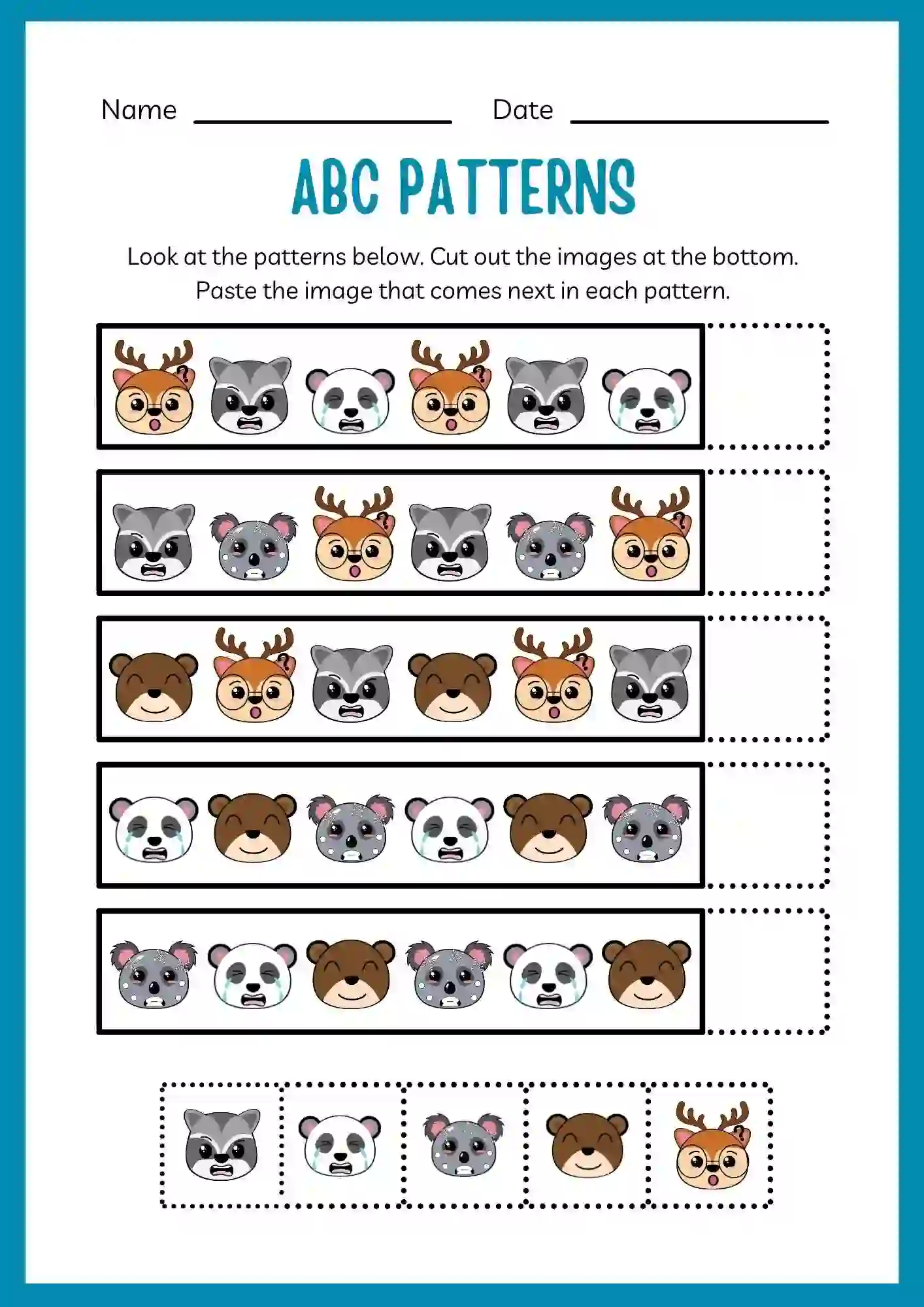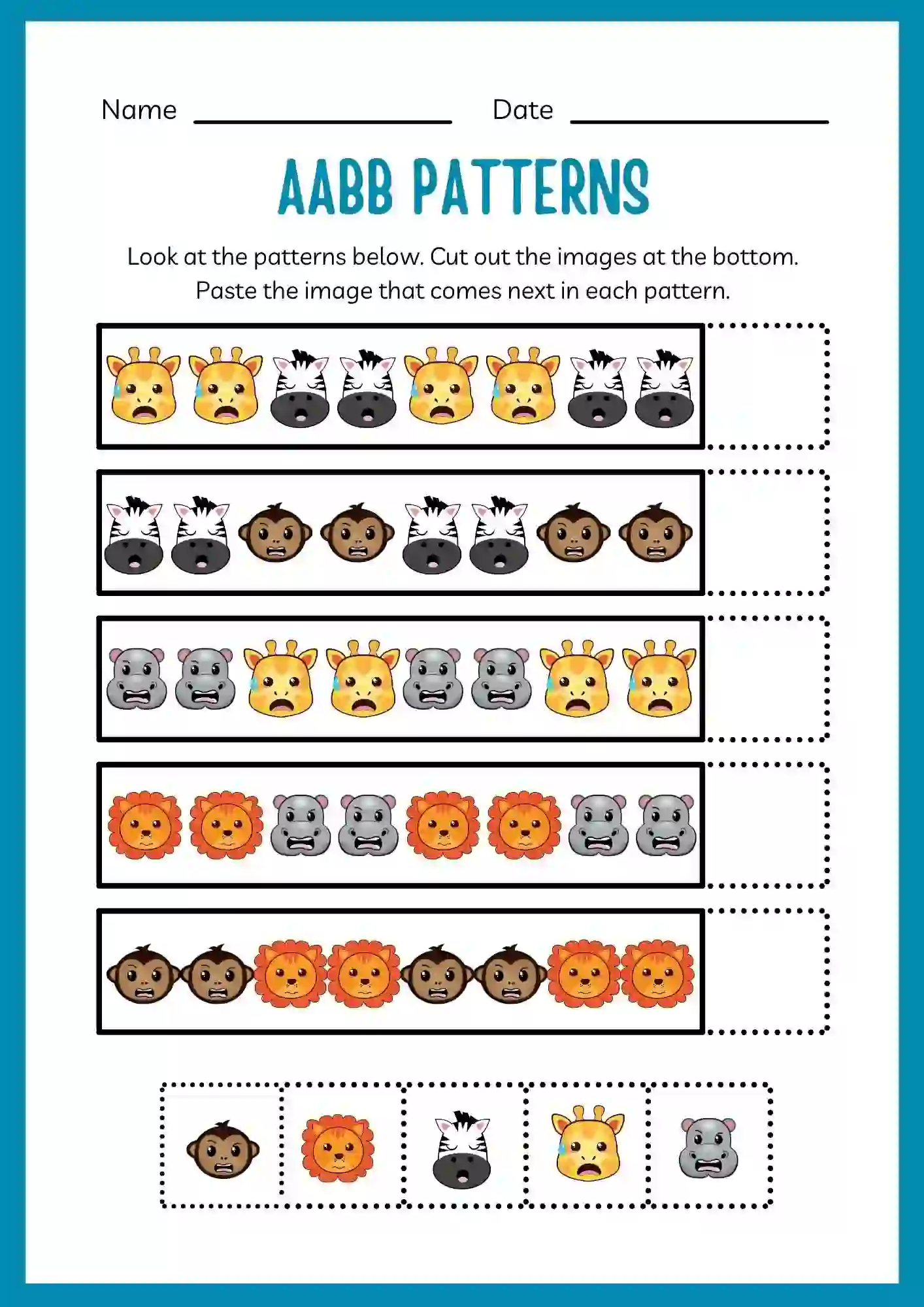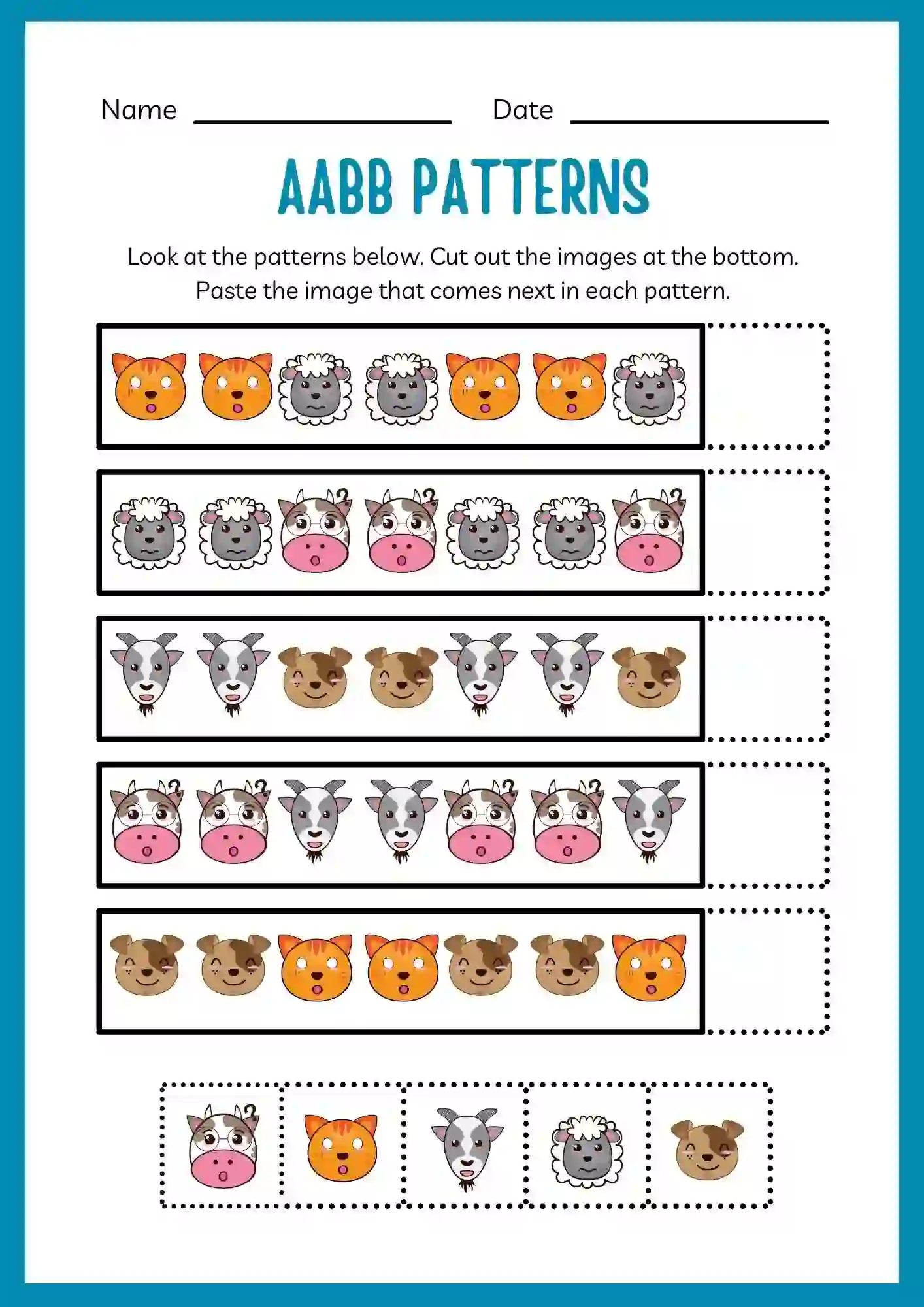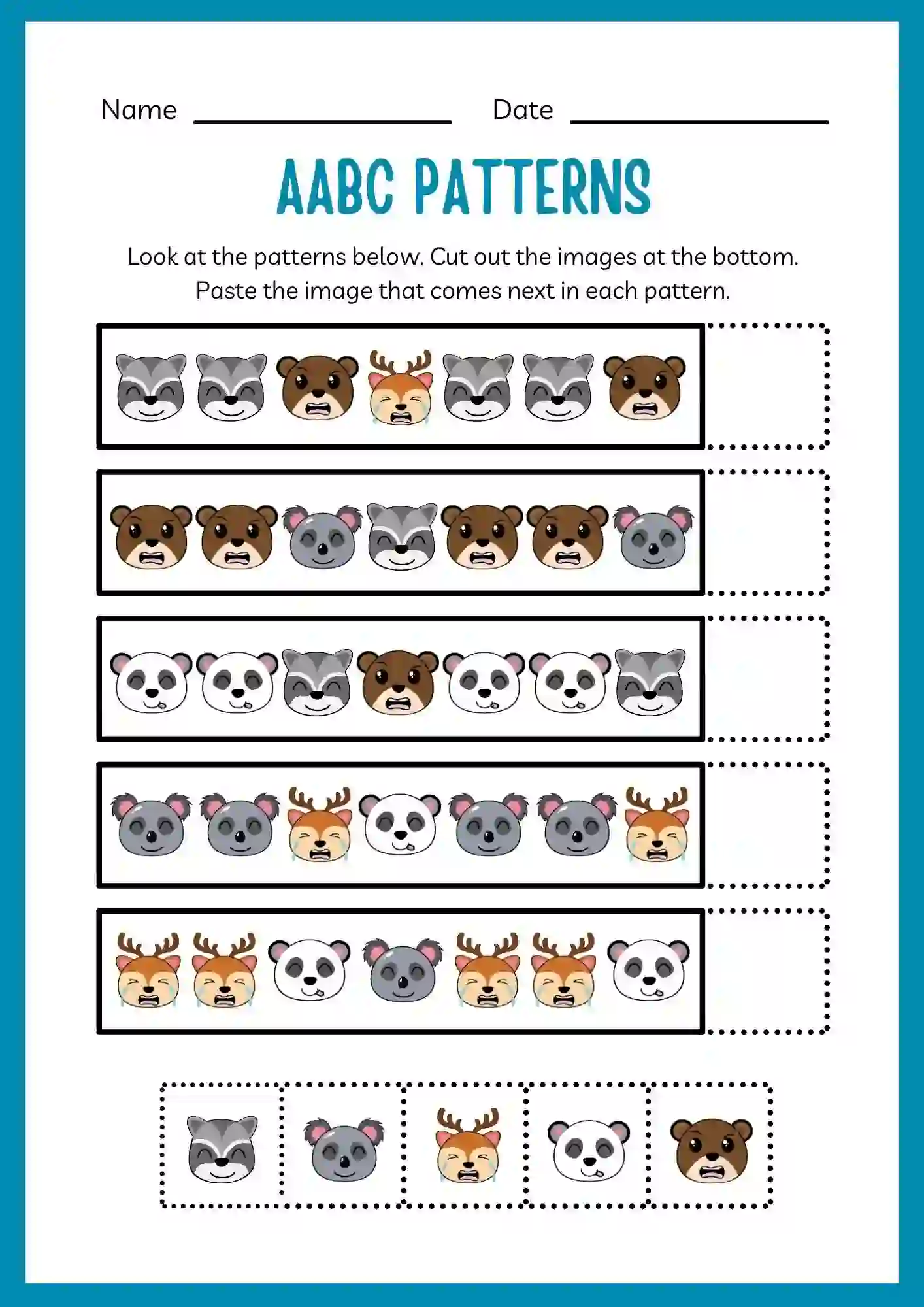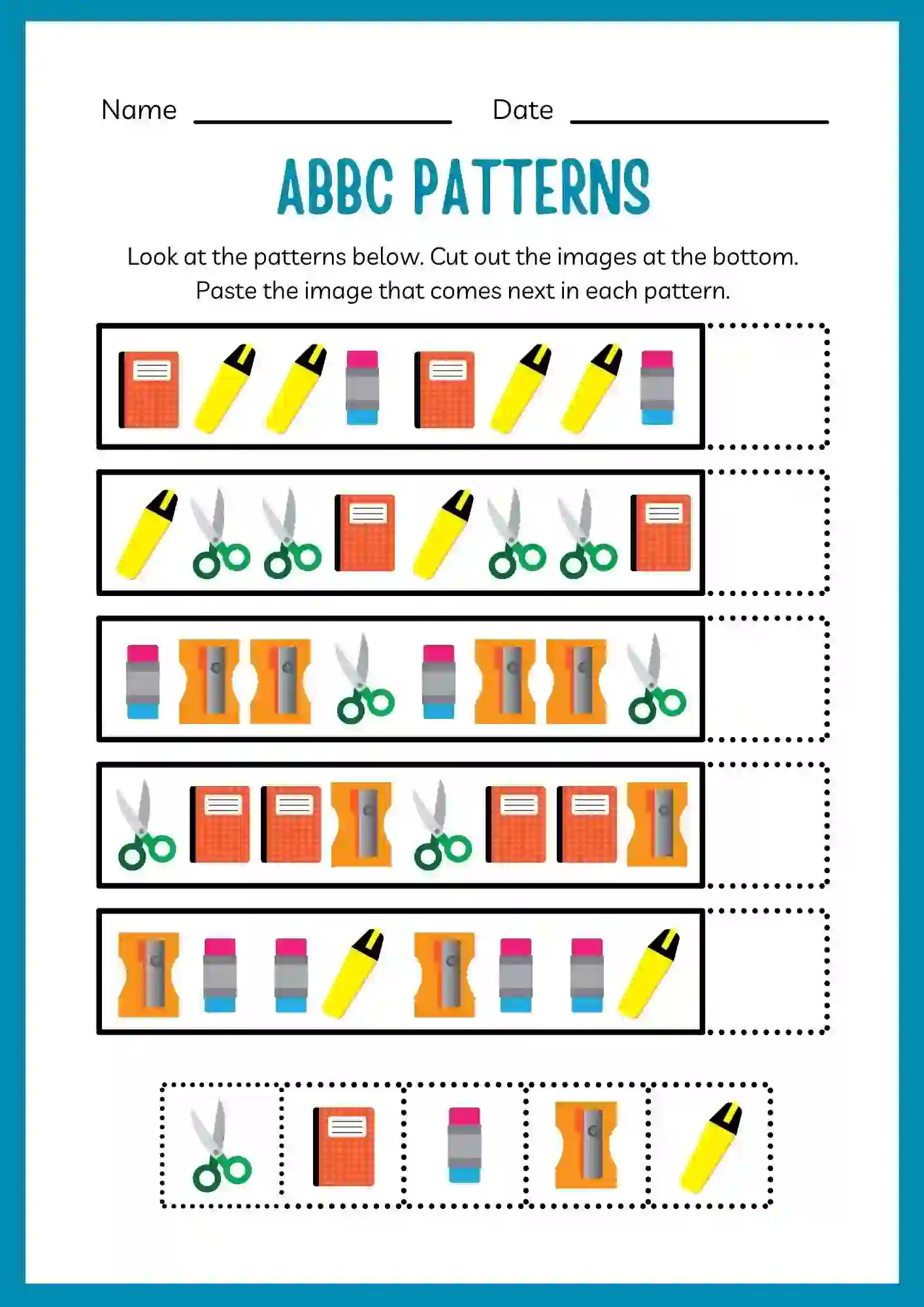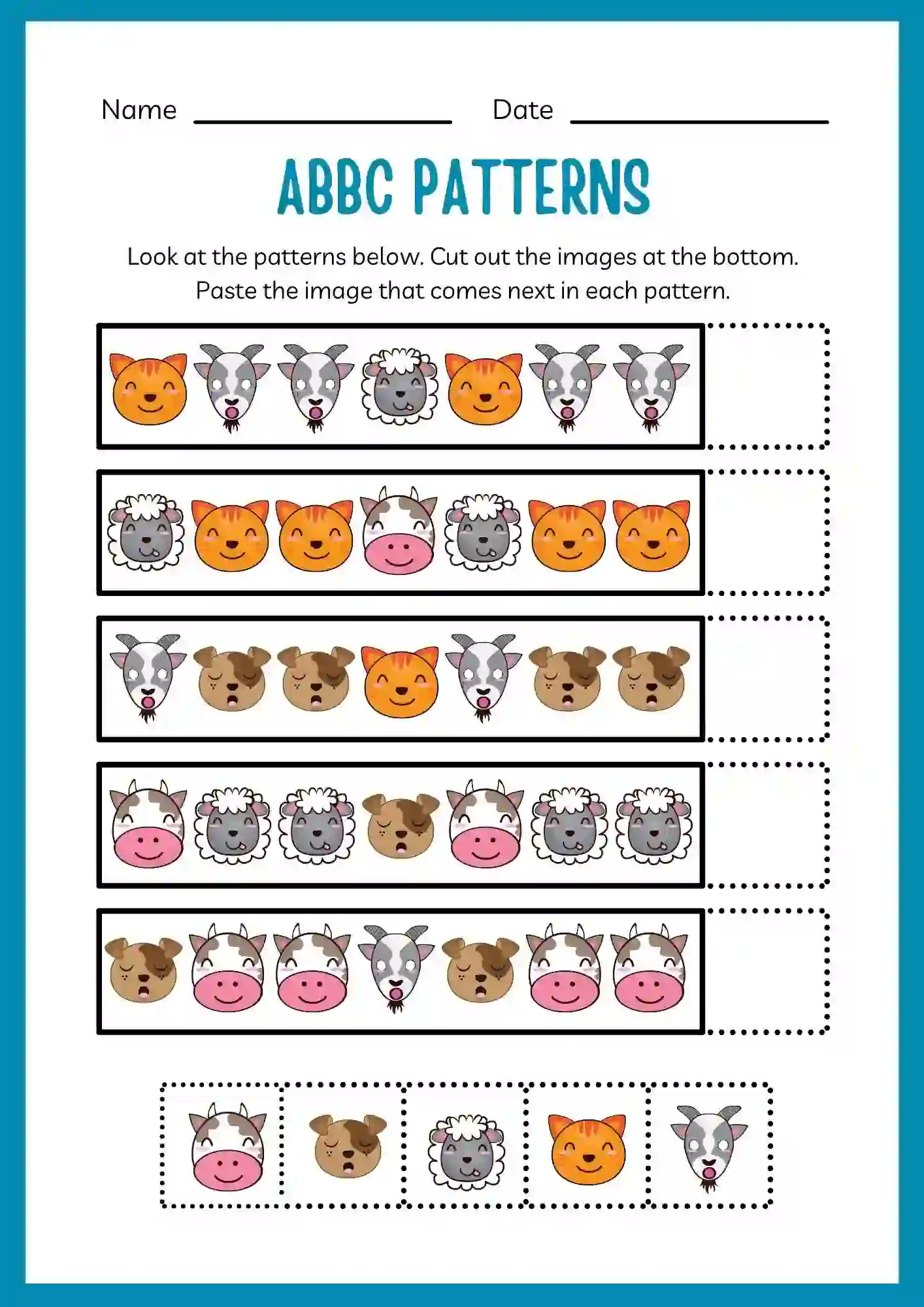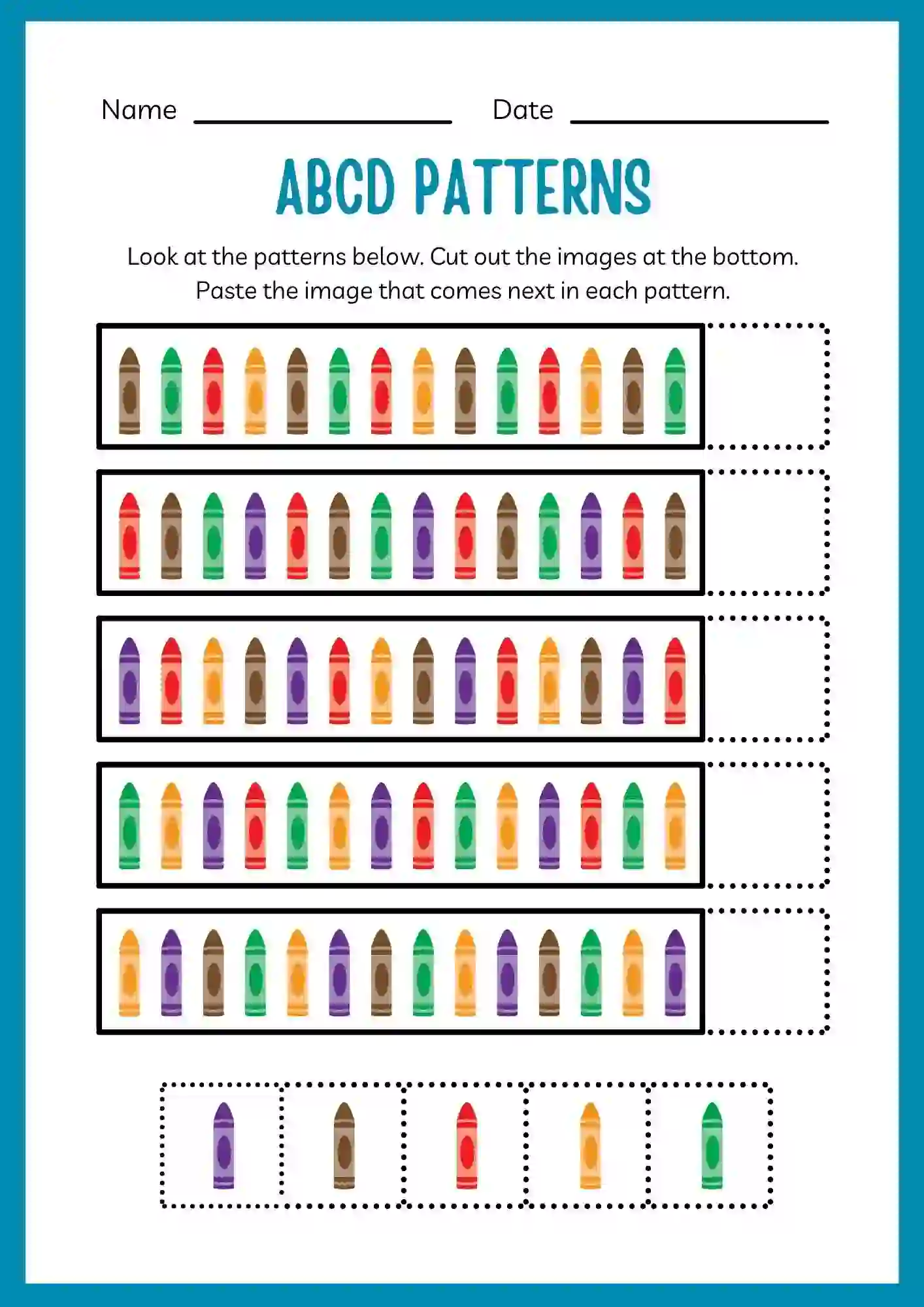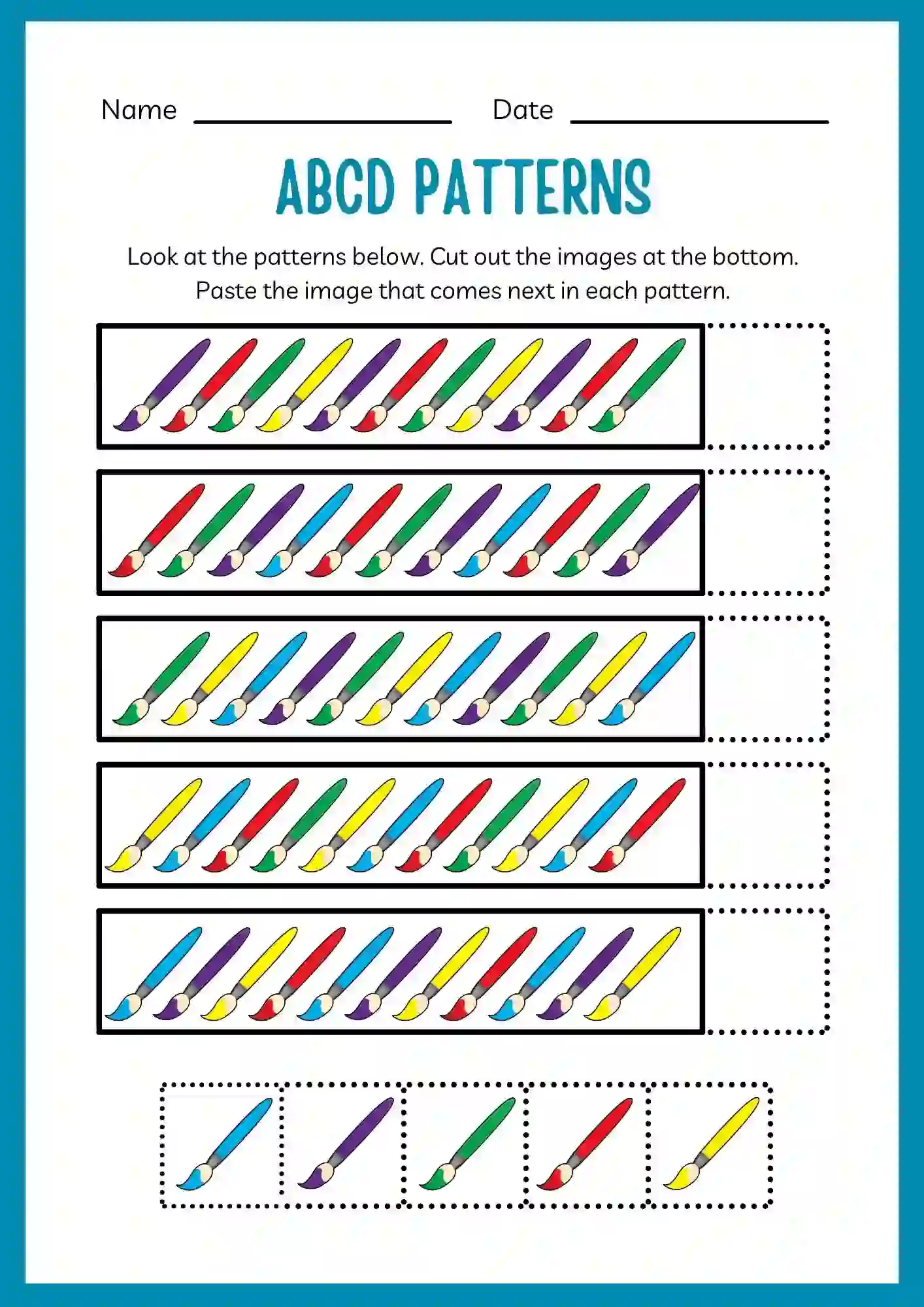Download our collection of Pattern Worksheets For Kindergarten. Each worksheet has its own cool set of patterns, with stuff that kids already know and love. These worksheets help with thinking skills and make those little brains even sharper!
Pattern Worksheets For Kindergarten Details:
| Feature | Details |
|---|---|
| Format | Downloadable PDF |
| Number of Pages | 20 |
| Content | Number Pattern Worksheets For Kindergarten/ Pattern Worksheets For Kindergarten |
| Illustrations | Yes, playful and age-appropriate |
| Suitable For | Nursery, Lkg & Ukg |
| Printable? | Yes |
Learning Objectives:
- Spotting Patterns: These worksheets will help kids see patterns. They’ll learn to recognize and continue all sorts of patterns like AB, AAB, ABC, and more.
- Seeing the Differences: We want to help kids get really good at spotting even the tiniest differences in patterns. By working on these worksheets, they’ll improve their ability to see what’s the same and what’s different in a sequence.
- Thinking Things Through: These worksheets require critical thinking, not just filling in blanks. Kids will use their brains to figure out the pattern.
- Improving Hand Skills: Kids will get to practice their cutting and pasting skills as they complete the patterns.
Who is this for?: These Worksheets are suitable for the children in LKG, UKG, nursery, preschool, and kindergarten, providing adaptable activities suitable for learning.
Materials Needed:
- Printed Worksheets: Printed Copies of Number Pattern Worksheets 1 to 20. You can download the PDF version here.
- Writing Materials: Crayons, pencils, and Markers.
- Scissors: Child-safe scissors for cutting out images.
- Glue or Tape: Glue or tape for pasting images onto worksheets.
How to Use:
- Introduce the Idea: Start by telling kids about patterns. Let them know that patterns are like things that repeat in a certain order, and it’s important to pay attention to them.
- Try Together: Show them how it’s done! Begin with some examples where you guide them through finding and continuing patterns. Use things that they can see and touch to make it easier.
- Try on Your Own: After that give them the worksheets and let them tackle the patterns by themselves. It’s now their chance to practice what they’ve learned.
- Look Back and Think: Go over what they’ve done, talk about how they figured out the patterns, and see if there are any other ways they could have done it. It’s all about making sure they understand and feel good about what they’ve accomplished.
Tips:
- Show them: Use colorful patterns, pictures, or objects to help students who learn best by seeing things.
- Talk In Between: Give verbal hints and reminders to help students who learn by listening figure out patterns and how to keep them going.
- Activities: Let kids use their hands and bodies to learn. Sorting patterns, playing, or doing activities that involve moving around can help those who learn best by touching and doing.
- Tech Time: Use fun apps, games, or things you can touch on a screen to teach students who love technology.
Additional Activities:
- Pattern Tour: Go on a pattern hunt! Walk around the classroom or outside and spot patterns in leaves, buildings, and stuff around you.
- Puzzle Time: Play with some puzzles! Make your own puzzles using blocks, tangrams, or even LEGO. See if you can copy and make longer patterns.
- Art Adventures: Mix math and art! Use paint, clay, or whatever you like to make cool art with patterns. It’s like creating your own masterpiece!
Download the PDF File Here:
Click To Download The Pattern Worksheets For Kindergarten PDF
How to Print:
- Get the PDF: Start by clicking the link to download the PDF files of the worksheets.
- Set up Printing: Make sure your printer is all setup. You can adjust the settings like paper size, whether it’s portrait or landscape, and how clear you want the print to be.
- Check Before You Print: Take a print preview. To make sure everything looks just right before you hit print.
- Print: Once you’re happy with how it looks, go ahead and hit that print button.
Tips for Parents and Educators:
- Encourage Them: Give lots of praise and positive words to make kids feel good about themselves when they’re doing pattern activities. This helps them feel confident and excited to keep going.
- Show Them How: When you’re doing everyday things, like sorting socks or arranging items, talk out loud about the patterns you notice. This helps kids see patterns in the world around them and understand how to spot them.
- Help Them Step by Step: Give them a lot of help and support, like pointing out patterns and showing how to continue them. Then, as kids get better, gradually let them do more on their own. This way, they can become confident and independent pattern-spotters.
- Keep It Going: Don’t just stop at worksheets. Look for patterns in daily life, play games that involve patterns, and find fun ways to explore them together. This keeps learning exciting and shows kids that patterns are everywhere!
Common Mistakes and Solutions:
- Complex Patterns: Some kids may find some more complex or tricky. So, break them down into simpler bits, use pictures to help out, and guide them until they understand the pattern.
- Engagement Issues: If they feel bored get them with interactive stuff, base patterns on what they’re into, and give them some say in the process to keep them interested and pumped.
- Tricky Hands: Cutting and sticking can be a real annoyance for some kids with fiddly fingers. We can help by giving them pre-cut stuff or bigger lines to cut along. Plus, a bit of extra practice never hurts anyone.
Love from LkgWorksheets!



